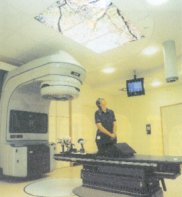Breast Cancer
Different types of treatment available for patients with breast cancer. Some treatments are standard (the currently used treatment), and some are tested in clinical trials. A treatment clinical trial is a study designed to improve current treatments or obtain information on new treatments for patients with cancer. When clinical trials show that a new treatment is better than the standard treatment, the new treatment is the standard treatment. Patients may want to think about taking part in a clinical trial. Some clinical trials are open only to patients who have not started treatment.
Surgery
Most patients with breast cancer surgery to remove cancer of the breast. Some of the lymph nodes under the arm are usually out and looked under a microscope to see whether they contain cancer cells.Breast-sparing surgery, an operation to remove the cancer, but not the breast itself, includes the following:
- Lumpectomy: Surgery to remove a tumor (lump) and a small amount of normal tissue around it.
- Partial mastectomy: Surgery to the part of the breast cancer and that some normal tissue around it has. This procedure is also called a segmental mastectomy.
Other forms of surgery are the following:
- Total mastectomy: Surgery to remove the whole breast that has cancer. This procedure is called a simple mastectomy. Some of the lymph nodes under the arm can be removed for biopsy at the same time as the breast or after surgery. This is done through a separate incision.
- Modified radical mastectomy: Surgery to remove the whole breast that has cancer, many of the lymph nodes under the arm, the lining of the chest muscles, and sometimes a part of the chest wall muscles.
- Radical mastectomy: Surgery to remove the breast cancer, chest wall muscles under the breast has, and all of the lymph nodes under the arm. This procedure is called a Halsted radical mastectomy.
If a patient does have a mastectomy to breast reconstruction (surgery to rebuild a breast shape after a mastectomy) may be considered. Breast reconstruction can be done at the time of mastectomy or at a later date. The reconstructed breast may be made to own (the patient nonbreast) tissue or by using implants filled with saline or silicone gel. Before the decision to implant is made, patients can call the Food and Drug Administration (FDA) Center for Devices and Radiological Health 1-888-INFO-FDA (1-888-463-6332) or visit the FDA website for more information about breast implants.



